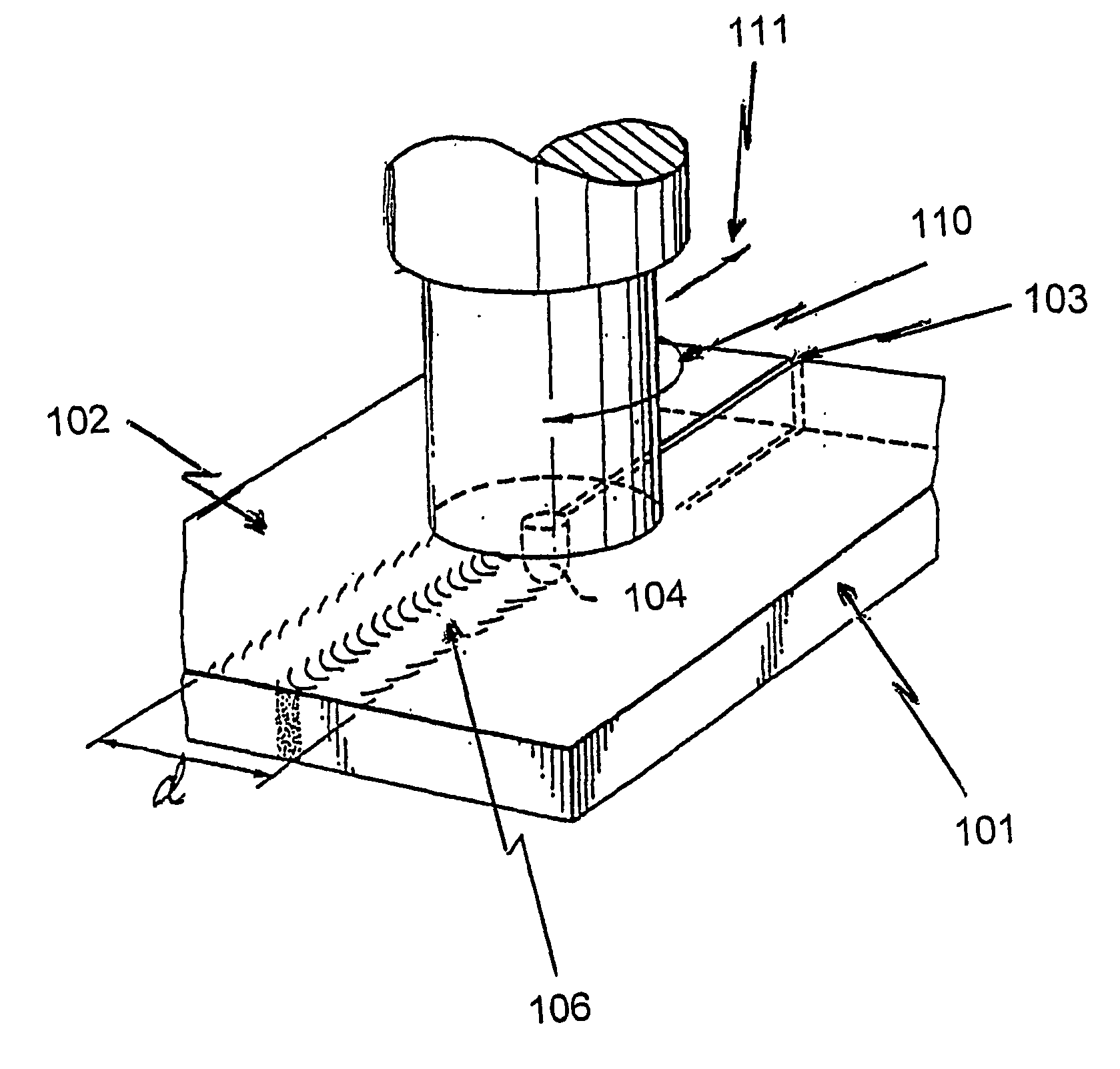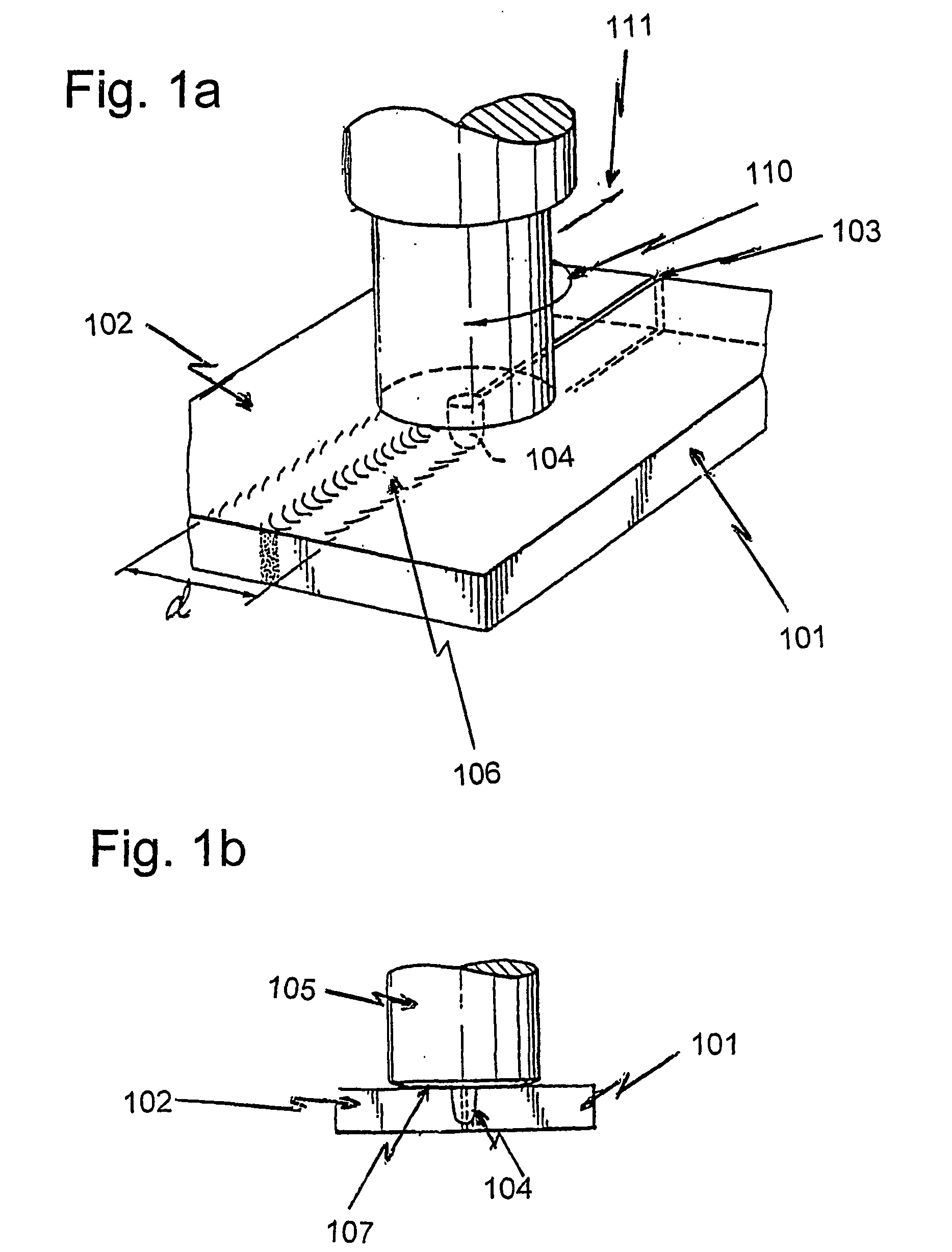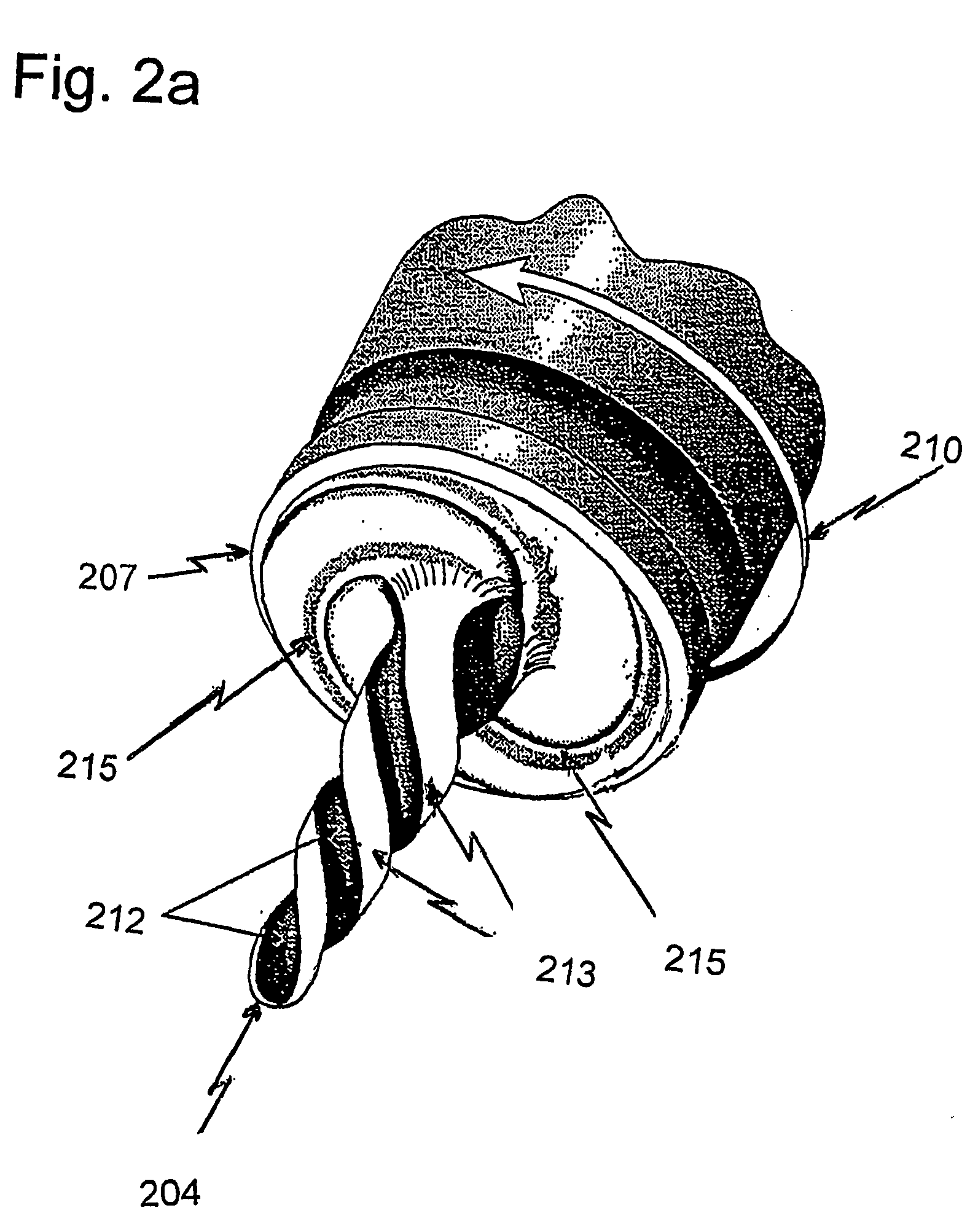FSW tool
- Summary
- Abstract
- Description
- Claims
- Application Information
AI Technical Summary
Problems solved by technology
Method used
Image
Examples
Embodiment Construction
[0047] In FIG. 5a a probe 504 according to the invention is shown. The probe is adapted to be fit into a holder (not shown) by providing a flat portion of the shaft of the probe. A shoulder (not shown) to be used in connection with the probe may be provided on the holder, alternatively on the probe itself.
[0048] The probe and the holder including an appropriate shoulder may of course be manufactured in one piece as the man skilled in the art will appreciate.
[0049] The probe 504 as shown exhibits three helically pitched surfaces 512. However, the form of these surfaces differ essentially from the flutes shown in the prior art probes. The lands or ridges 513 according to the prior art have become thin ridges 513, the surface of which is essentially parallel with the axis of rotation 407 of the probe and a land 523 between each ridge 513 and the adjacent helically pitched surface 512 is also essentially parallel with the axis of rotation 507 of the probe. The lands 523 exhibit thin hel...
PUM
| Property | Measurement | Unit |
|---|---|---|
| Angle | aaaaa | aaaaa |
| Angle | aaaaa | aaaaa |
| Angle | aaaaa | aaaaa |
Abstract
Description
Claims
Application Information
 Login to View More
Login to View More - R&D
- Intellectual Property
- Life Sciences
- Materials
- Tech Scout
- Unparalleled Data Quality
- Higher Quality Content
- 60% Fewer Hallucinations
Browse by: Latest US Patents, China's latest patents, Technical Efficacy Thesaurus, Application Domain, Technology Topic, Popular Technical Reports.
© 2025 PatSnap. All rights reserved.Legal|Privacy policy|Modern Slavery Act Transparency Statement|Sitemap|About US| Contact US: help@patsnap.com



